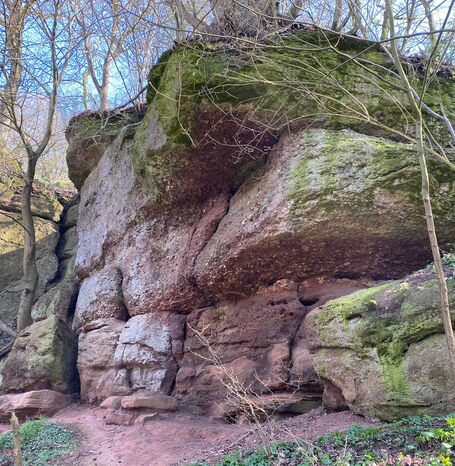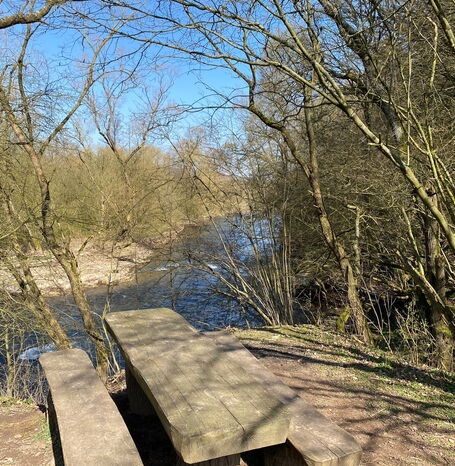The Ederstede is the result of the incision of the Eder into the hard rock bedrock during the Quaternary period. In this youngest period of the earth's history (since about 1.7 million years) the climate was characterized by strong fluctuations: Several ice ages led to large-scale glaciations, which - starting from Scandinavia in the north and the Alps in the south - reached far into Central Europe. The Waldeck-Frankenberg Geopark was always located south of the ice sheet in the so-called periglacial area (= "adjacent to the ice").
Especially at the beginning and at the end of each ice age, when the climate changed, the Eder was active and could deepen strongly into the underground. Frost weathering provided large amounts of debris that served as "erosion weapons" and promoted incision. Thus, river work created the escarpment. At the Ederstede itself, rocks from the Zechstein period (Permian, about 255 million years before today) are exposed. Above 5-6 m of finely bedded and about 1.5 m of obliquely bedded gravelly sandstones ("Geismar strata") in the lower part of the cliff slope, coarse conglomerates with oblique bedding, clay pebbles and a typical roof tile bedding of the gravels follow up to the top of the terrain. These are deposits of overgrown river systems at the eastern edge of the slate mountains, which occur here - inland from the coast of the Zechstein Sea - instead of marine or lagoonal sediments.
Tip
Combine your visit to the Ederstede with a charming hike along the edge of the Eder valley. Start in the historic old town of Battenberg along the edge of the steep drop to the east. At Birkenbringhausen, the Eder turns north in a large loop. Shortly after it reaches the southern escarpment again, the striking rock outcrop of the Ederstede is located at the cut of a side valley into the Eder impact slope.
The Ederstede was chosen geotope of the year in 2020!



